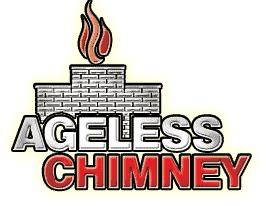Chimney Sweep in Hell's Kitchen, NY
What our clients say




Read About Us
Browse Masonry & Brickwork
contact us
Preparing Your Home for a Chimney Sweep Visit in Hell's Kitchen, NY

Why Preparing for a Chimney Sweep is Important
Text:
Scheduling a chimney sweep in Hell’s Kitchen, NY ensures your fireplace is safe and efficient. Proper preparation can make the process smoother.
Understanding the steps before a chimney sweep arrives can help homeowners in New York City feel confident and ready for the service.
Experienced Professionals
Our team has extensive experience in chimney sweeping, ensuring top-quality service for every home in New York City.
Customer Satisfaction
At Ageless Chimney, we prioritize customer satisfaction. Our commitment to excellence has earned us a trusted reputation in Hell's Kitchen, NY.
Reliable Service
With Ageless Chimney, you can expect punctual and reliable service. We respect your time and home, providing thorough and efficient chimney sweeps.

Steps to Prepare Your Home
First, clear the area around your fireplace. Remove any decorative items, furniture, or flammable materials to give the sweep clear access. This step is essential because it allows the professionals from Ageless Chimney to work efficiently without any obstructions. Make sure to create a safe, clutter-free zone that extends at least six feet around the fireplace to ensure the team has ample space to maneuver.
Next, ensure that your fireplace is completely cool and has not been used for at least 24 hours before the appointment. This precaution is crucial for the safety of both your home and the chimney sweep team. Ashes and embers can remain hot for a long time, and allowing sufficient cooling time prevents any accidental burns or fire hazards during the cleaning process. If you have a gas fireplace, turn off the pilot light as an added safety measure.
Additionally, inform your household members about the scheduled chimney sweep visit. This communication helps everyone understand the importance of keeping the area clear and minimizing disturbances during the service. If you have pets, consider securing them in another room to prevent them from interfering with the cleaning process. This preparation ensures a smooth, efficient visit from the Ageless Chimney team in Hell’s Kitchen, NY.

What to Expect During the Visit
On the day of your chimney sweep in Hell’s Kitchen, NY, the team from Ageless Chimney will arrive equipped with all necessary tools and protective gear. They will start by covering the area surrounding your fireplace with tarps or plastic sheets to protect your home from any soot or debris. This initial step is crucial in maintaining the cleanliness of your living space while the sweep is performed.
The inspection and cleaning process will be thorough, addressing any buildup or potential issues within the chimney. The sweep will use specialized brushes and vacuums to remove soot, creosote, and other debris that have accumulated over time. The team will also inspect the chimney structure for any signs of damage or wear, ensuring that everything is in safe working order. If any issues are found, they will provide detailed explanations and recommendations for repairs.
After the service, our experts will offer tips on maintaining your chimney and answer any questions you might have. They will explain best practices for regular maintenance and provide advice on how to prevent excessive buildup in the future. This personalized approach ensures you are well-informed and confident in the safety of your fireplace, giving you peace of mind after the chimney sweep in New York City. If you would like to learn more about what you should expect or any other questions you can contact us at 516-795-1313.
